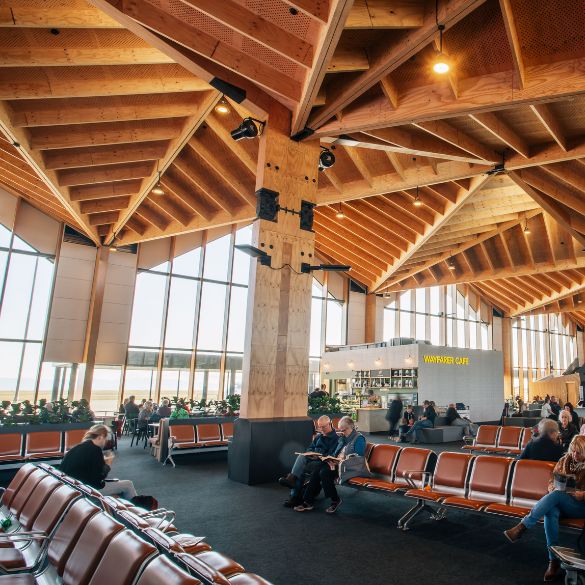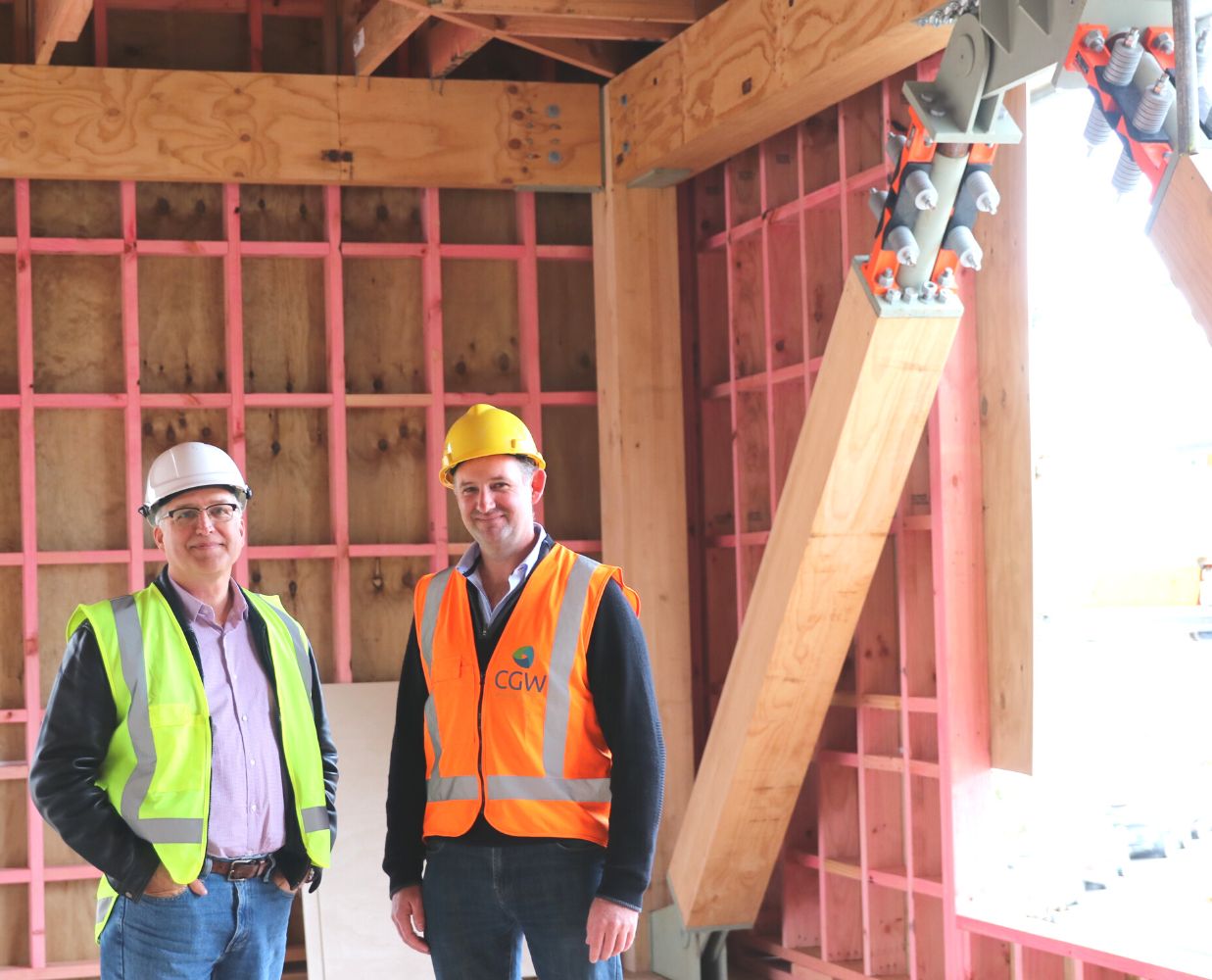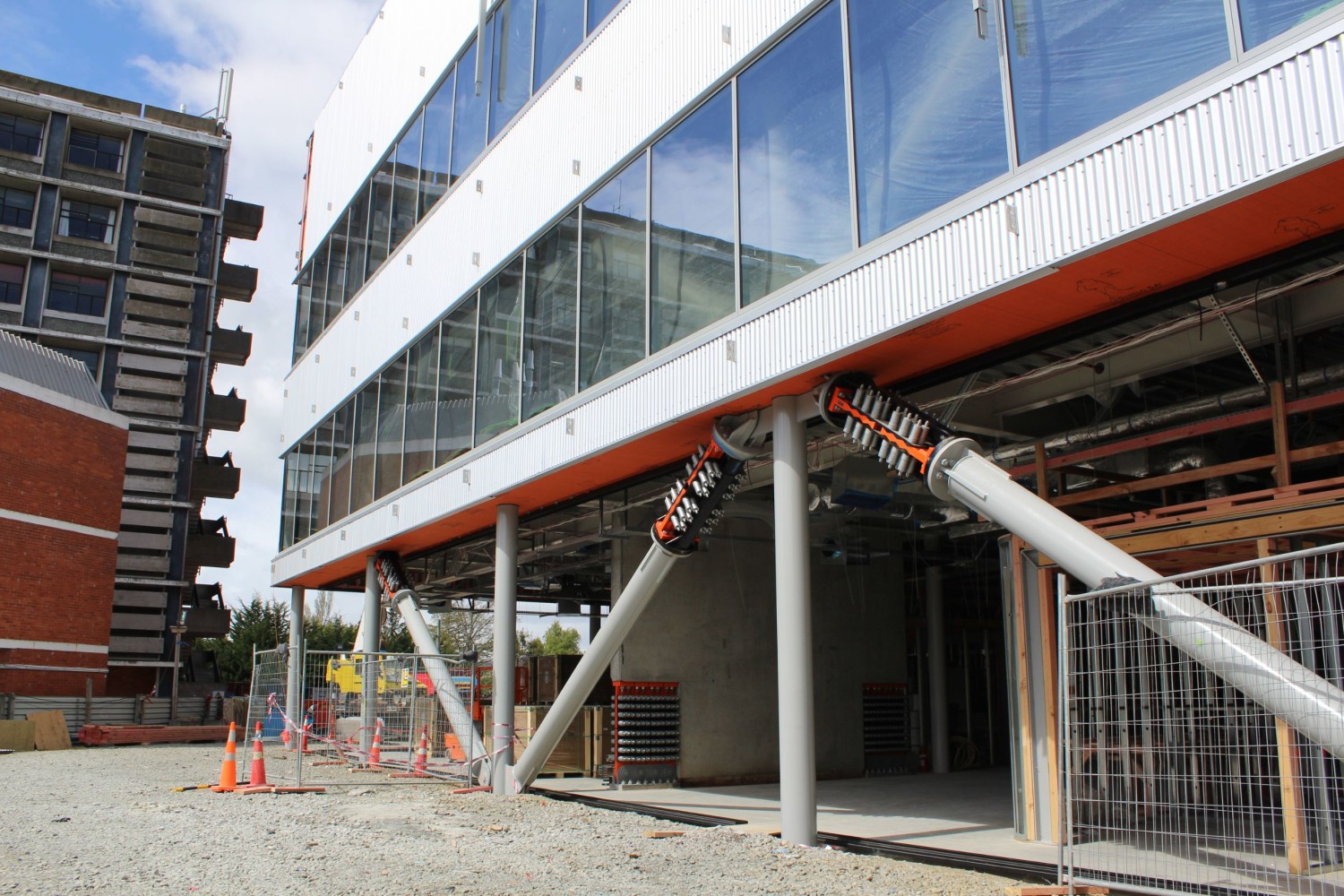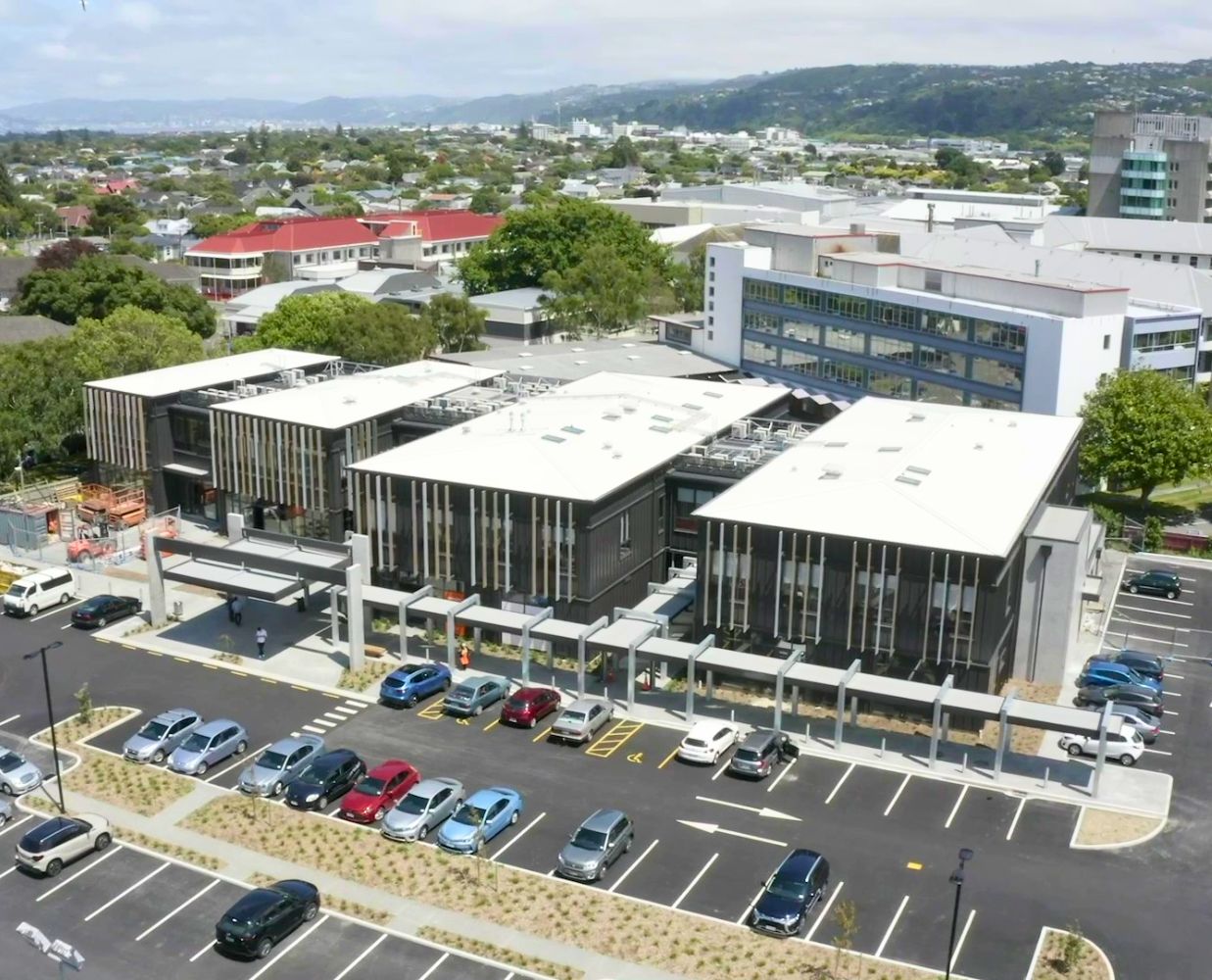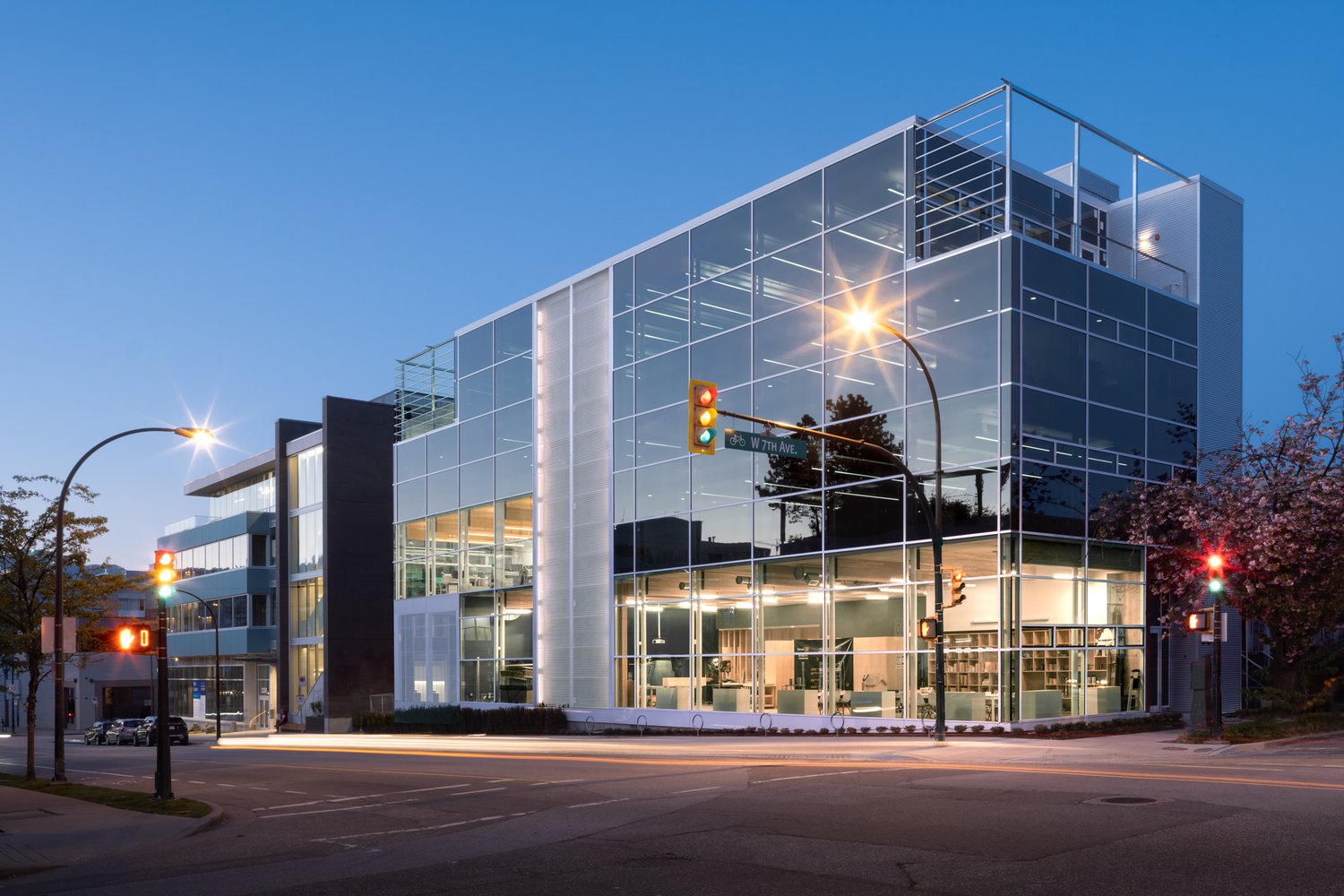Quenneville and Zarnani developed a device that dampens movement and self-centres all in one, allowing occupants to safely re-enter buildings soon after the earthquake is over.
The pair started Tectonus after winning the grand prize in the 2015 Velocity $100k Challenge run by the Business School’s Centre for Innovation and Entrepreneurship. UniServices went on to support the company with an early-stage investment and advisory services.
“What makes the Tectonus products different to others is that they are designed to withstand numerous earthquakes and aftershocks and continue to protect the structure without downtime,” says Quenneville, who is now Chief Technical Officer while Zarnani is Senior Director of Innovation.
